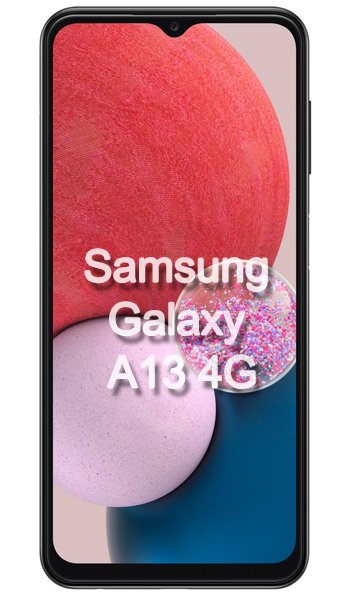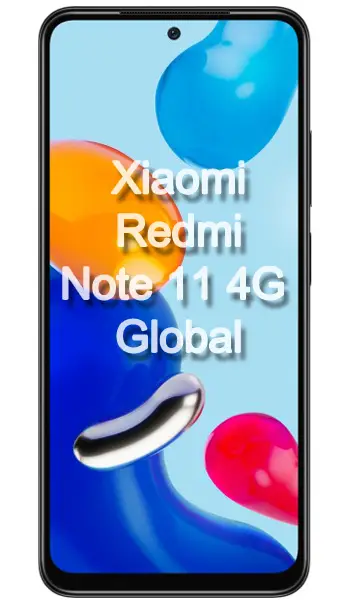Samsung Galaxy A13 vs Xiaomi Redmi Note 11 4G Comparison and Differences
Smartphone 1

Samsung Galaxy A13
Smartphone 2

Xiaomi Redmi Note 11 4G
Smartphone 3
Differences between Samsung Galaxy A13 and Xiaomi Redmi Note 11 4G - Which to Choose?
In this post, I will introduce you to two new smartphones - Samsung Galaxy A13 and Xiaomi Redmi Note 11 4G. I will compare their specs and discuss which one is a better proposition.
For starters, here are the specs of the Samsung Galaxy A13. This model was launched on March 4, 2022. It has GSM/HSPA/LTE network support and a 5000 milliamp-hour battery with fast charging up to 15W. The smartphone has a single or dual (depending on region) SIM card and a Mali-G52 or Mali-G52 MC2 GPU. The processor is Exynos 850 (8nm) or Mediatek MT6769V/CU Helio G80 (12nm) and the operating system is Android 12, One UI 4.1. The Samsung Galaxy A13 measures 165.1 x 76.4 x 8.8 mm and weighs 195 grams. Other specs include microSDXC memory slot, 3GB/4GB/6GB RAM, 32GB/64GB/128GB internal storage, 6.6-inch PLS TFT display with 1080 x 2408 pixels resolution, WiFi 802.11 a/b/g/n/ac, Bluetooth 5.0, NFC, USB Type-C and multiple sensors.
Now let's compare the Samsung Galaxy A13 with the Xiaomi Redmi Note 11 4G.
The Redmi Note 11 was launched on January 26, 2022 and features GSM/HSPA/LTE network support and a 5000 milliamp-hour battery that can charge up to 100% in 60 minutes thanks to 33W fast charging. This model also features a dual SIM card and Adreno 610 GPU. The processor is Qualcomm SM6225 Snapdragon 680 4G (6nm) and the operating system is Android 11, MIUI 13. Xiaomi Redmi Note 11 measures 159.9 x 73.9 x 8.1 mm and weighs 179 grams. It has a micro SDXC memory slot, 4GB/6GB RAM, 64GB/128GB internal storage, 6-inch AMOLED display with 1080 x 2400 pixels resolution, WiFi 802.11 a/b/g/n/ac, Bluetooth 5.0, NFC, USB Type-C and other specifications.
Although the two smartphones have many features in common, there are some small differences that can be decisive in choosing one of them. For example, the Samsung Galaxy A13 has a larger display (6.6 inches) compared to the Xiaomi Redmi Note 11 (6 inches). However, the Redmi Note 11 has an AMOLED screen that can offer brighter colors compared to the PLS TFT on the Samsung Galaxy A13. The cameras of the two devices also have different specs. Samsung Galaxy A13 has a 50 MP camera, 123 degree ultra-wide angle and two small additional cameras for macro and depth. The Xiaomi Redmi Note 11 also has a 50 MP camera, but with a smaller viewing angle and two small cameras for macro and depth, as well as a 13 MP front-facing camera.
In conclusion, which of the models is a better proposition depends on multiple factors of the particular user. One of the main factors is budget, as the Samsung Galaxy A13 sells for around 179 euros, while the Xiaomi Redmi Note 11 is priced at around 160 euros. Other factors that can influence the choice are preferred display features, cameras, operating system, etc. All in all, both smartphones provide excellent technical features and functionalities to suit the needs of users.
Samsung Galaxy A13 or Xiaomi Redmi Note 11 4G Specs Comparison
 Common specs
Common specs
| Brand and model | Samsung Galaxy A13 | Xiaomi Redmi Note 11 4G | |
| Rating | (+0) | (+0) | |
| Release date | 2022, March 04 | 2022, January 26 | |
| Dimensions (HxWxD) | 165.1 x 76.4 x 8.8 mm | 6.5 x 6.5 x 3.01 in | 159.9 x 73.9 x 8.1 mm | 6.3 x 6.3 x 2.91 in | |
| Weight | 195 g | 6.88 oz | 179 g | 6.31 oz | |
| Body Build | Glass front (Gorilla Glass 5), plastic frame, plastic back | ||
| Case | buy from Amazon | buy from Amazon | |
| Colors | Black, White, Peach, Blue | Graphite Gray, Pearl White, Star Blue | |
| Battery | 5000 mAh, Li-Po, non-removable | 5000 mAh, Li-Po, non-removable | |
| Approximate price | 179 EUR | 160 EUR | |
| Check price | from Amazon | from Amazon |
 Screen
Screen
| Technology | PLS TFT | AMOLED | |
| Touchscreen | capacitive touchscreen | capacitive touchscreen | |
| Display colors | 16M | 16M | |
| Screen size | 6.6" in | 6" in | |
| Screen area | 104.9 cm2 | 99,8 cm2 | |
| Screen format | 20:9 (height:width) | 20:9 (height:width) | |
| Screen to body ratio | 83.2% | 84,5% | |
| Screen resolution | 1080 x 2408 px | 1080 x 2400 px | |
| Screen PPI /points per inch/ | 400 PPI | 409 PPI | |
| Screen protection | Corning Gorilla Glass 5 | Corning Gorilla Glass 3 | |
| Other specs | - 90Hz -700 nits -1000 nits (peak) |
||
| Screen protector | buy from Amazon | buy from Amazon |
 Camera and Video
Camera and Video
| Rear camera, main | 50 MP, Quad | 50 MP, Quad | |
| Camera specs | -50 MP, f/1.8, (wide), PDAF -5 MP, f/2.2, 123˚ (ultrawide), 1/5", 1.12µm -2 MP, f/2.4, (macro) -2 MP, f/2.4, (depth) |
-50 MP, f/1.8, 26mm (wide), 1/2.76", 0.64µm, PDAF -8 MP, f/2.2, 118˚ (ultrawide), 1/4", 1.12µm -2 MP, f/2.4, (macro) -2 MP, f/2.4, (depth) |
|
| Functions | LED flash, panorama, HDR | LED flash, HDR, panorama | |
| Video | 1080p@30fps | 1080p@30fps | |
| Front camera, selfie | 8 MP, Single | 13 MP, Single | |
| Specifications | 8 MP, f/2.2, (wide) | 13 MP, f/2.4, (wide), 1/3.1", 1.12µm | |
| Video | 1080p@30fps | 1080p@30fps |
 Performance
Performance
| Operating system - OS | Android 12, One UI 4.1 | Android 11, MIUI 13 | |
| Chipset | - Exynos 850 (8nm) - Mediatek MT6769V/CU Helio G80 (12 nm) |
- Qualcomm SM6225 Snapdragon 680 4G (6 nm) | |
| CPU | - Octa-core (4x2.0 GHz Cortex-A55 & 4x2.0 GHz Cortex-A55) - Mediatek MT6769V/CU Helio G80 (12 nm) |
- Octa-core (4x2.4 GHz Kryo 265 Gold & 4x1.9 GHz Kryo 265 Silver) | |
| GPU | Mali-G52 Mali-G52 MC2 |
Adreno 610 | |
| External memory | microSDXC (dedicated slot) | microSDXC (dedicated slot) | |
| Internal memory | 32GB 3GB RAM, 32GB 4GB RAM, 64GB 4GB RAM, 128GB 4GB RAM, 128GB 6GB RAM | 64GB 4GB RAM, 64GB 6GB RAM, 128GB 4GB RAM, 128GB 6GB RAM |
 Benchmark
Benchmark
| Antutu 10 Total | 302700 | ||
| Antutu 10 CPU | 102930 | ||
| Antutu 10 GPU | 39651 | ||
| Antutu 10 Mem | 87991 | ||
| Antutu 10 UX | 102930 | ||
| Antutu 9 Total | 122753 | 238450 | |
| GeekBench 5 Single Core | 163 | 384 | |
| GeekBench 5 Multi-Core | 945 | 1685 |
 Communication and Connectivity
Communication and Connectivity
| SIM card | Single SIM (Nano-SIM)Dual SIM (Nano-SIM, dual stand-by) | Dual SIM (Nano-SIM, dual stand-by) | |
| Network | GSM / HSPA / LTE | GSM / HSPA / LTE | |
| Bands | -2G - GSM 850 / 900 / 1800 / 1900 - SIM 1 & SIM 2 (dual-SIM only) -3G - HSDPA 850 / 900 / 1900 / 2100 -4G - LTE |
-2G - GSM 850 / 900 / 1800 / 1900 - SIM 1 & SIM 2 -3G - HSDPA 850 / 900 / 1700(AWS) / 1900 / 2100 -4G - 1, 2, 3, 4, 5, 7, 8, 20, 28, 38, 40, 41 |
|
| Speed | HSPA 42.2/5.76 Mbps, LTE-A | HSPA 42.2/5.76 Mbps, LTE-A (CA) | |
| GPRS | Yes | Yes | |
| Edge | Yes | Yes | |
| Wi-Fi | Wi-Fi 802.11 a/b/g/n/ac, dual-band, Wi-Fi Direct, hotspot | Wi-Fi 802.11 a/b/g/n/ac, dual-band, Wi-Fi Direct, hotspot | |
| GPS | Yes, with A-GPS, GLONASS, GALILEO, BDS | Yes, with A-GPS, GLONASS, BDS, GALILEO | |
| NFC | Yes (market/region dependent) | Yes (market/region dependent) | |
| USB | USB Type-C 2.0, USB On-The-Go | USB Type-C 2.0, USB On-The-Go | |
| Bluetooth | 5.0, A2DP, LE | 5.0, A2DP, LE | |
| Harmful irradiation |
SAR - 0.49 W/kg (head) SAR EU - 0.37 W/kg (head) 1.39 W/kg (body) |
 Music and Audio
Music and Audio
| Radio | No | FM radio | |
| Headphone jack | Yes | Yes | |
| Others | - 24-bit/192kHz audio |
 Other features
Other features
| Sensors | - Fingerprint (side-mounted), accelerometer, compass, proximity | - Fingerprint (side-mounted), accelerometer, gyro, proximity, compass , Infrared port | |
| Other extras |
- Fast charging 15W |
- Fast charging 33W, 100% in 60 min -Power Delivery 3.0 -Quick Charge 3+ - IP53, dust and splash protection |
